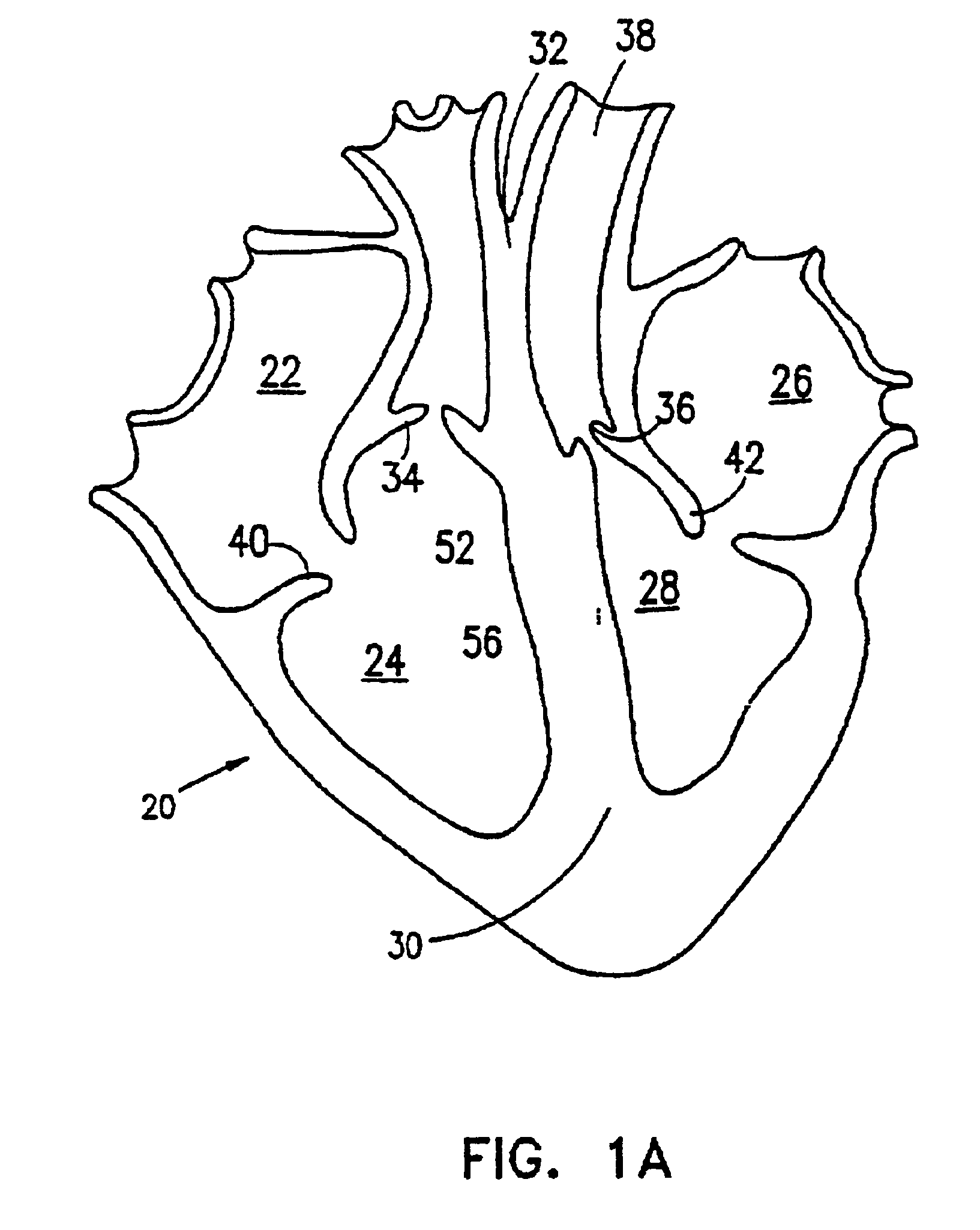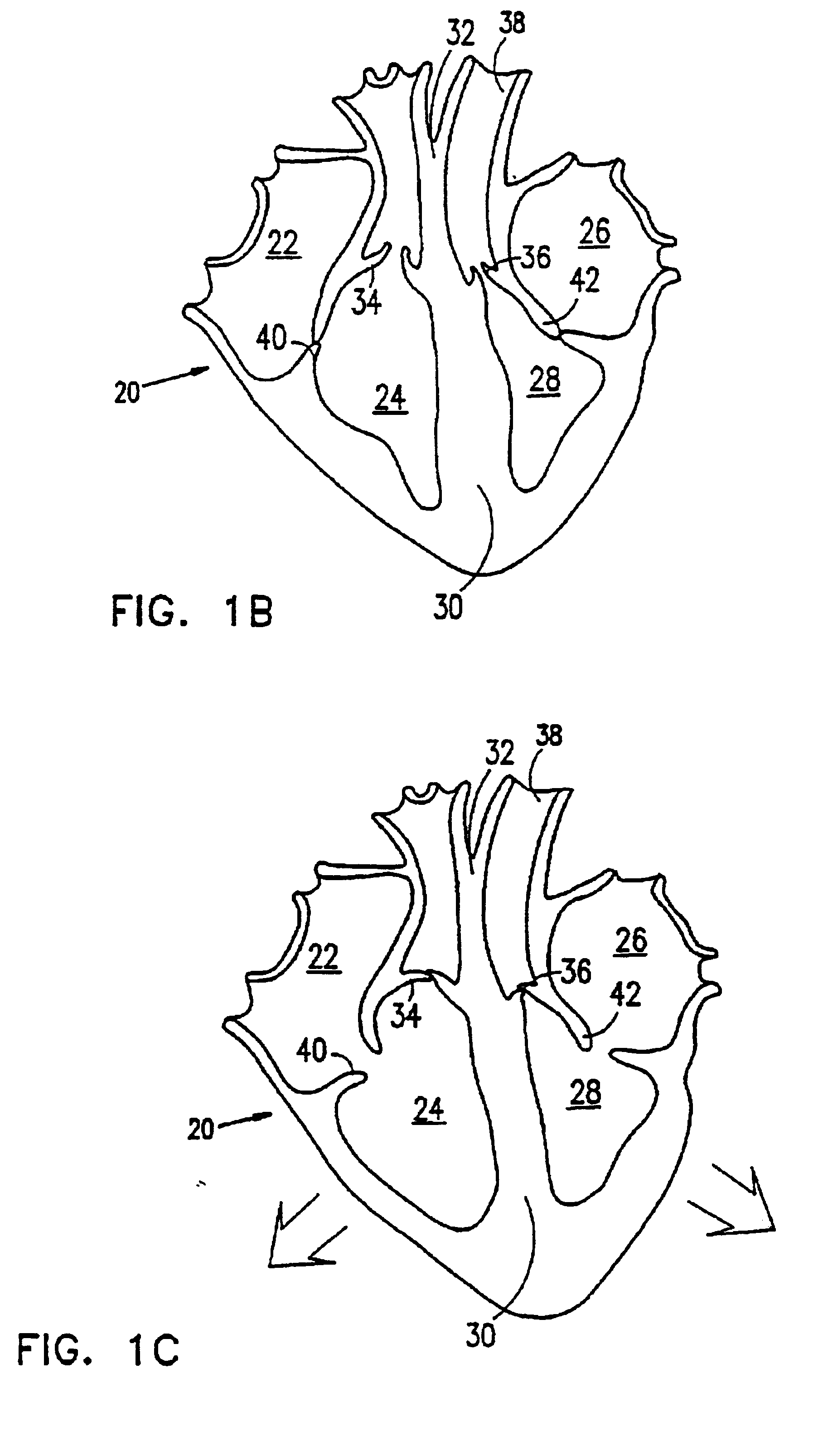Method of pacing a heart using implantable device
a heart and implantable technology, applied in the field of cardiac medicine, can solve the problems of cardiac output general decline, heart failure, maximal force generation, etc., and achieve the effect of enhancing the compensatory mechanism of the hear
- Summary
- Abstract
- Description
- Claims
- Application Information
AI Technical Summary
Benefits of technology
Problems solved by technology
Method used
Image
Examples
Embodiment Construction
[0188]A first preferred embodiment of the invention relates to mapping the geometry of the heart and time related changes in the geometry of the heart. FIG. 6 is a schematic side view of a preferred apparatus for performing the mapping. FIG. 7 is a flowchart showing a preferred method for performing a mapping.
[0189]Referring to FIG. 6, a distal tip 74 of a mapping catheter 72 is inserted into heart 20 and brought into contact with heart 20 at a location 75. Preferably, the position of tip 74 is determined using a position sensor 76. Sensor 76 is preferably a position sensor as described in PCT application US95 / 01103, “Medical diagnosis, treatment and imaging systems”, filed Jan. 24, 1995, in U.S. Pat. No. 5,391,199 or in U.S. Pat. No. 5,443,489, all assigned to the same assignee as the instant application and the disclosures of which are incorporated herein by reference, and which typically require an external magnetic field generator 73. Alternatively, other position sensors as kno...
PUM
 Login to View More
Login to View More Abstract
Description
Claims
Application Information
 Login to View More
Login to View More - R&D
- Intellectual Property
- Life Sciences
- Materials
- Tech Scout
- Unparalleled Data Quality
- Higher Quality Content
- 60% Fewer Hallucinations
Browse by: Latest US Patents, China's latest patents, Technical Efficacy Thesaurus, Application Domain, Technology Topic, Popular Technical Reports.
© 2025 PatSnap. All rights reserved.Legal|Privacy policy|Modern Slavery Act Transparency Statement|Sitemap|About US| Contact US: help@patsnap.com



